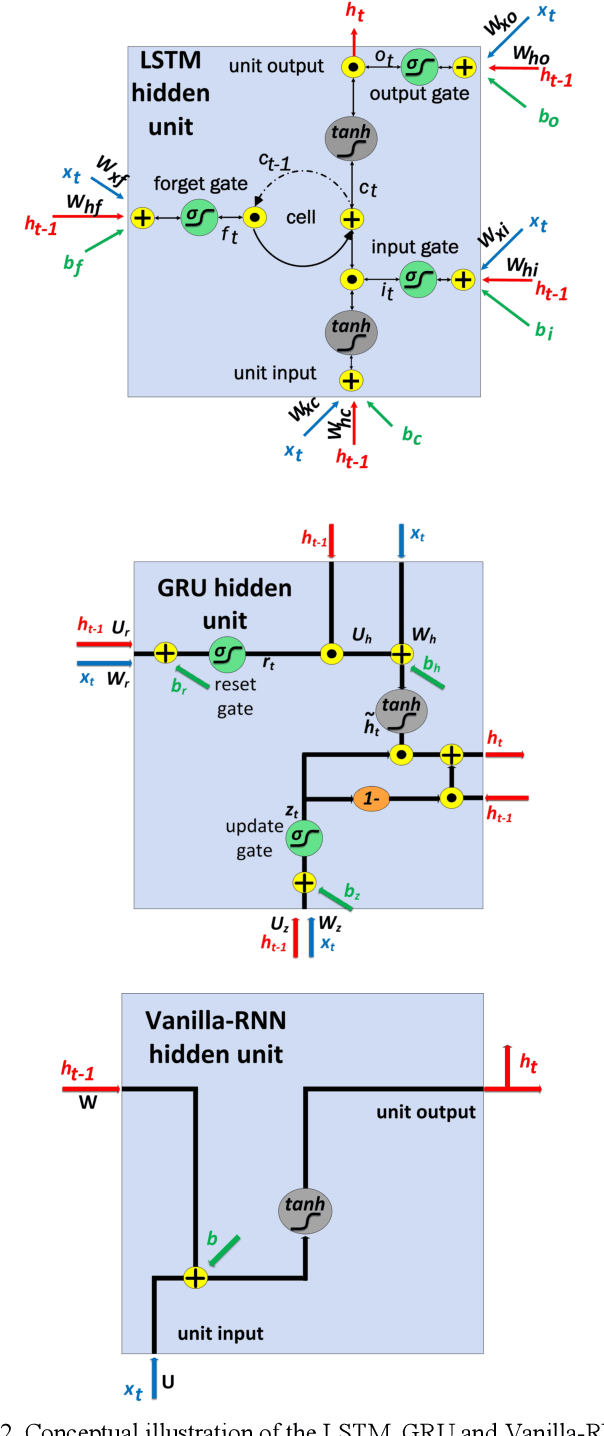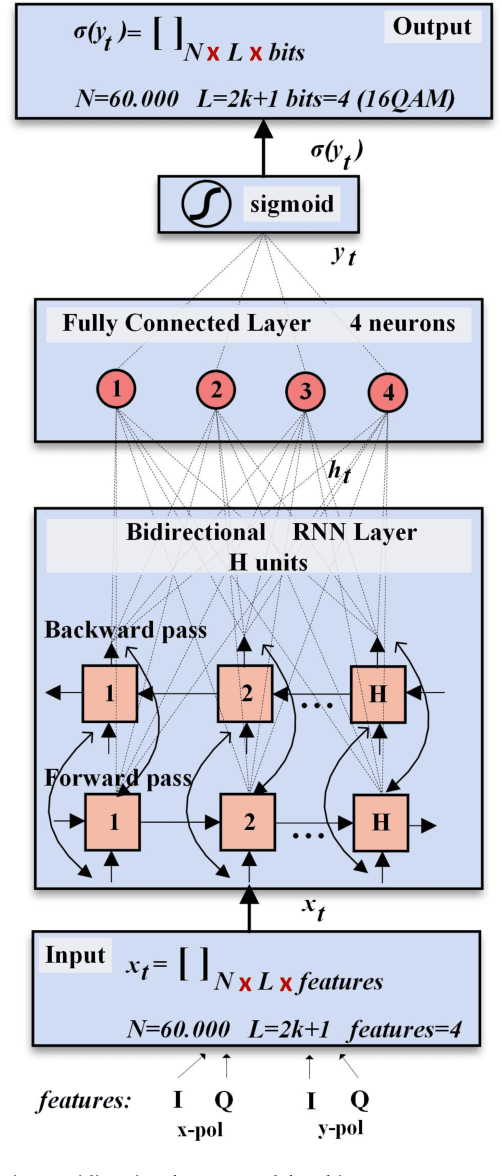Performance and Complexity Analysis of bi-directional Recurrent Neural Network Models vs. Volterra Nonlinear Equalizers in Digital Coherent Systems
Paper and Code
Mar 03, 2021



We investigate the complexity and performance of recurrent neural network (RNN) models as post-processing units for the compensation of fibre nonlinearities in digital coherent systems carrying polarization multiplexed 16-QAM and 32-QAM signals. We evaluate three bi-directional RNN models, namely the bi-LSTM, bi-GRU and bi-Vanilla-RNN and show that all of them are promising nonlinearity compensators especially in dispersion unmanaged systems. Our simulations show that during inference the three models provide similar compensation performance, therefore in real-life systems the simplest scheme based on Vanilla-RNN units should be preferred. We compare bi-Vanilla-RNN with Volterra nonlinear equalizers and exhibit its superiority both in terms of performance and complexity, thus highlighting that RNN processing is a very promising pathway for the upgrade of long-haul optical communication systems utilizing coherent detection.
 Add to Chrome
Add to Chrome Add to Firefox
Add to Firefox Add to Edge
Add to Edge